Submitted:
08 November 2023
Posted:
09 November 2023
You are already at the latest version
Abstract
Keywords:
1. Introduction
2. Verification and Validation
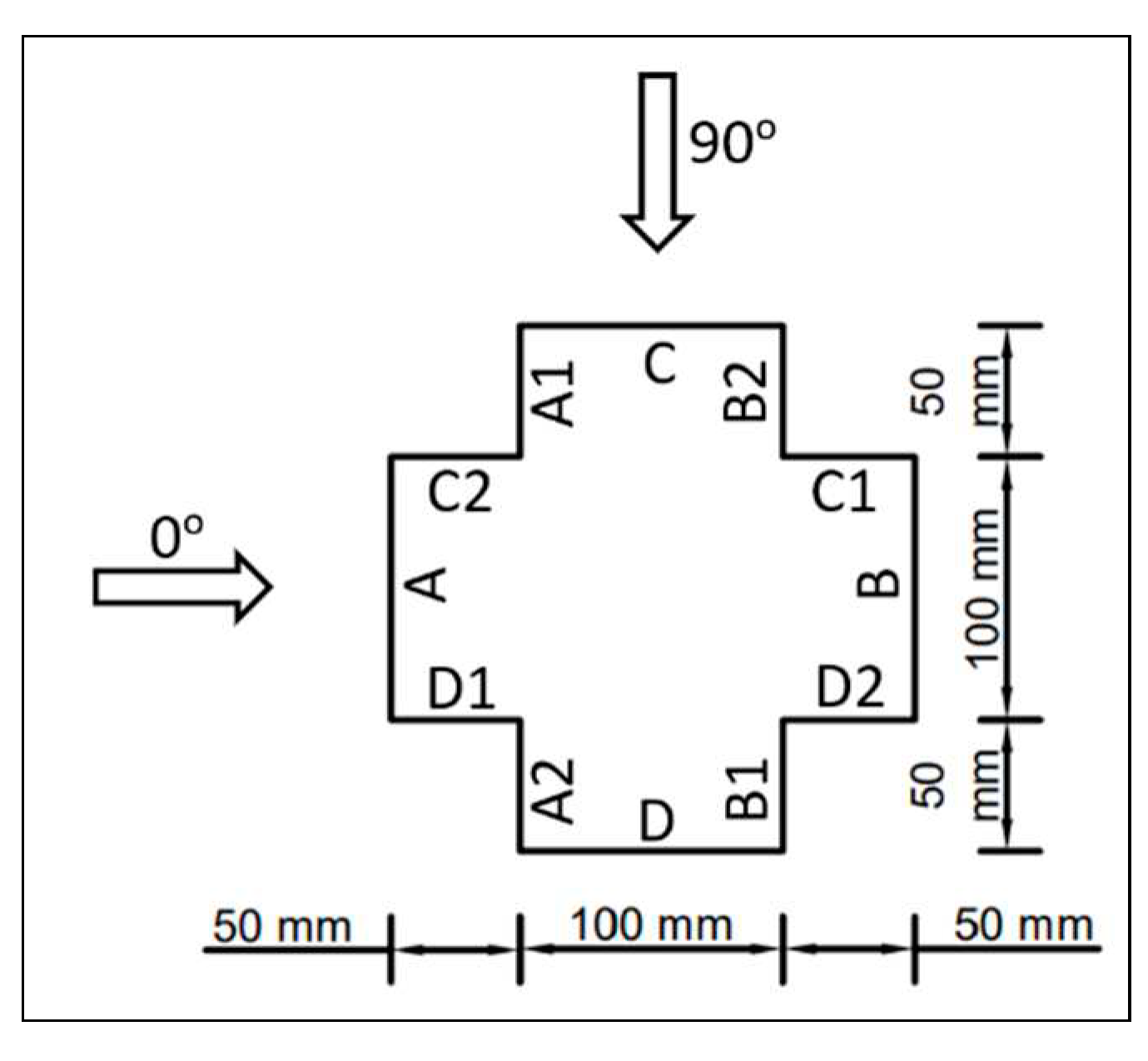
3. Numerical Analysis
4. Mean Velocity Characteristics
5. Model and Computational Domain
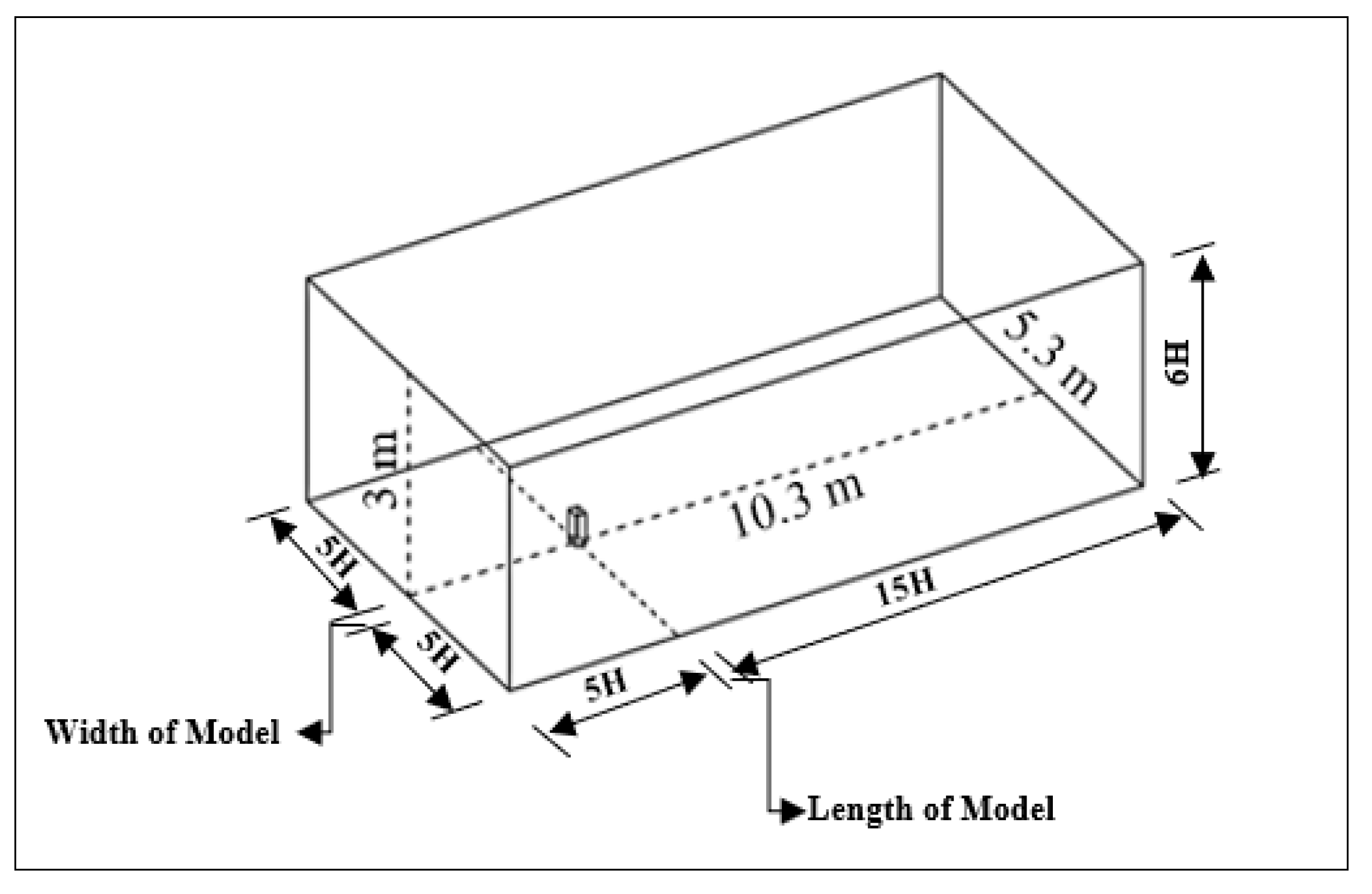
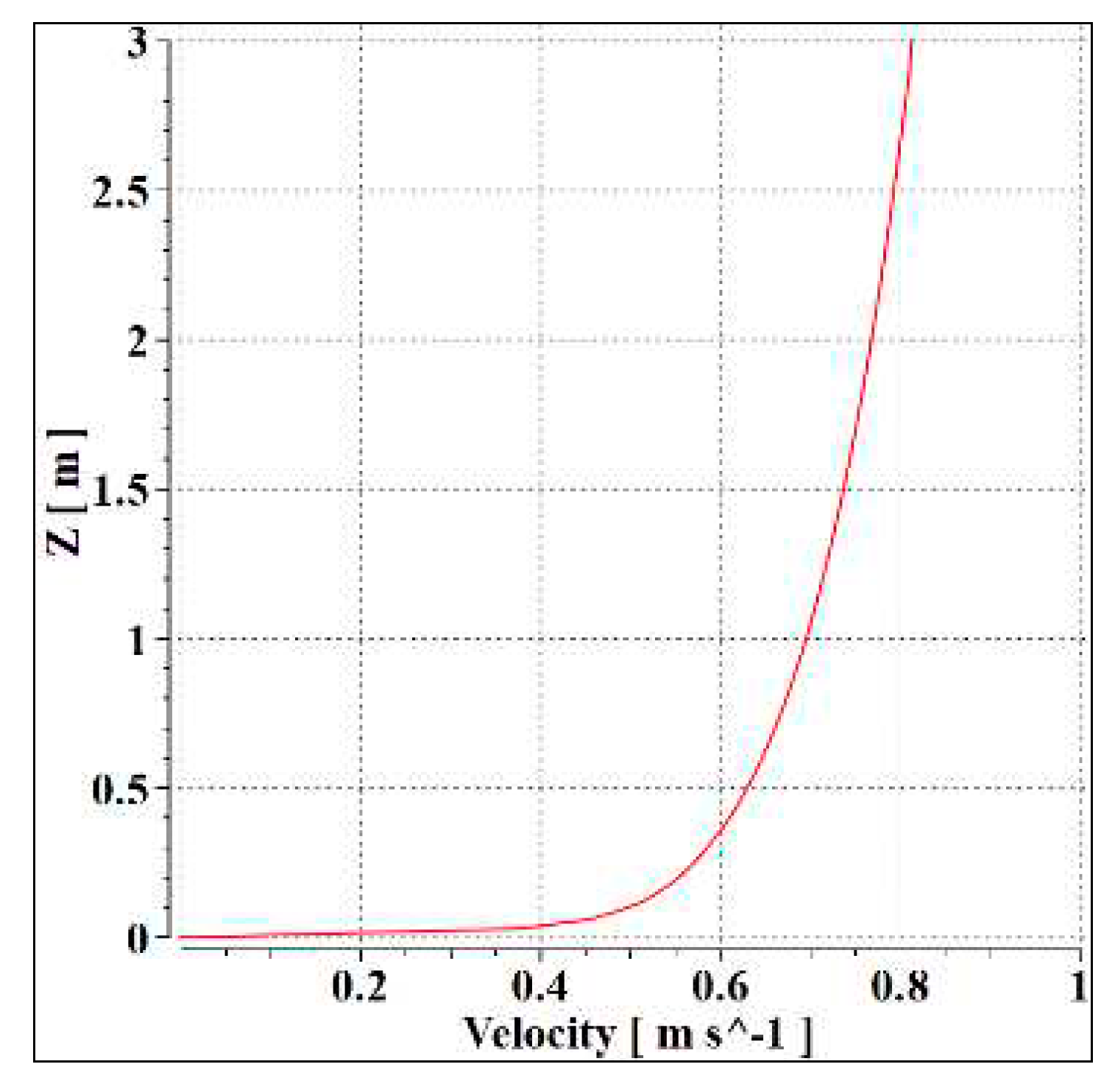
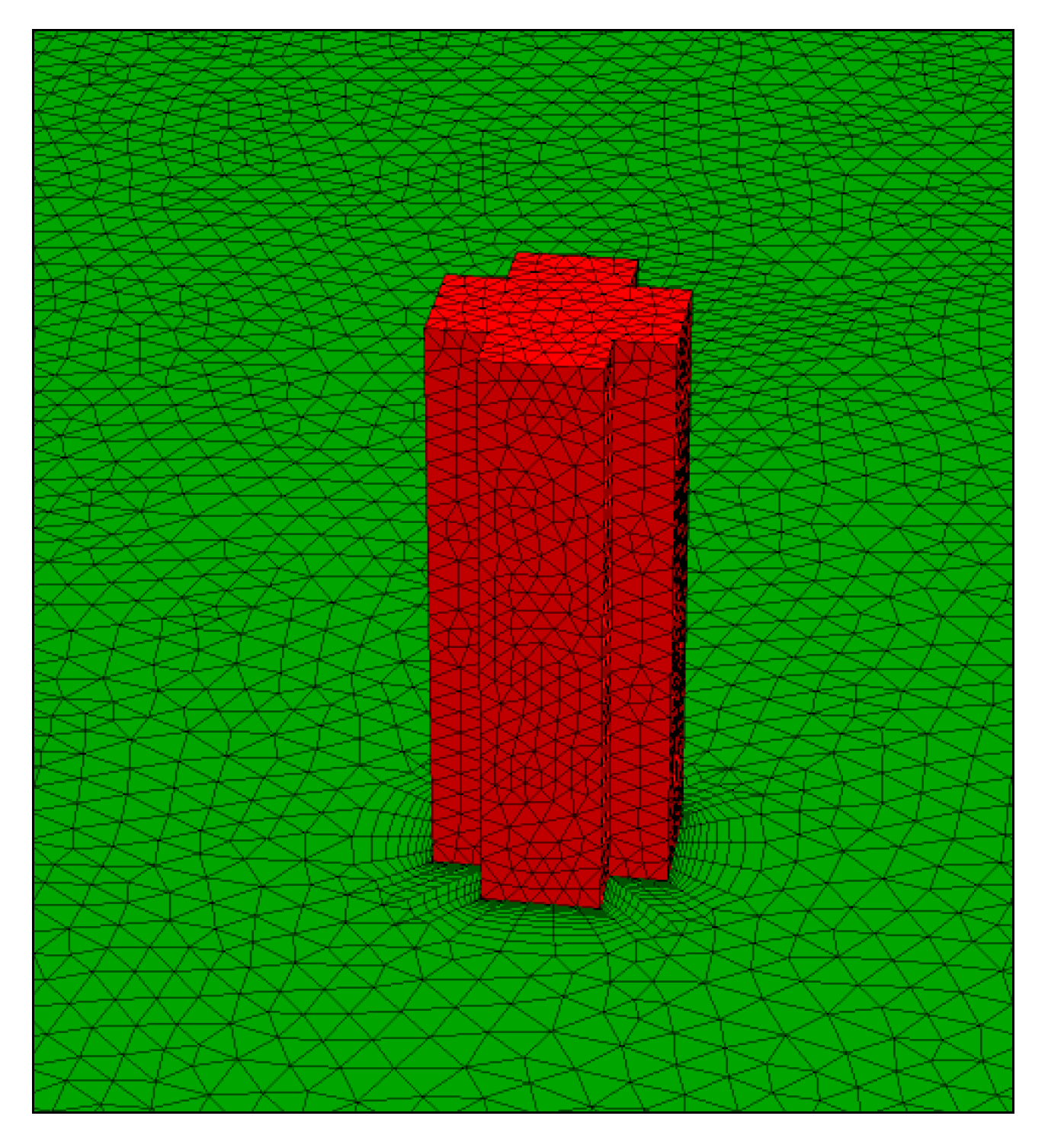
6. Grid Discretization
7. Boundary Conditions
8. Convergence of the solution
7. Result and discussion
7.1. Flow Characteristics
7.1.1. Streamlines on Horizontal Planes
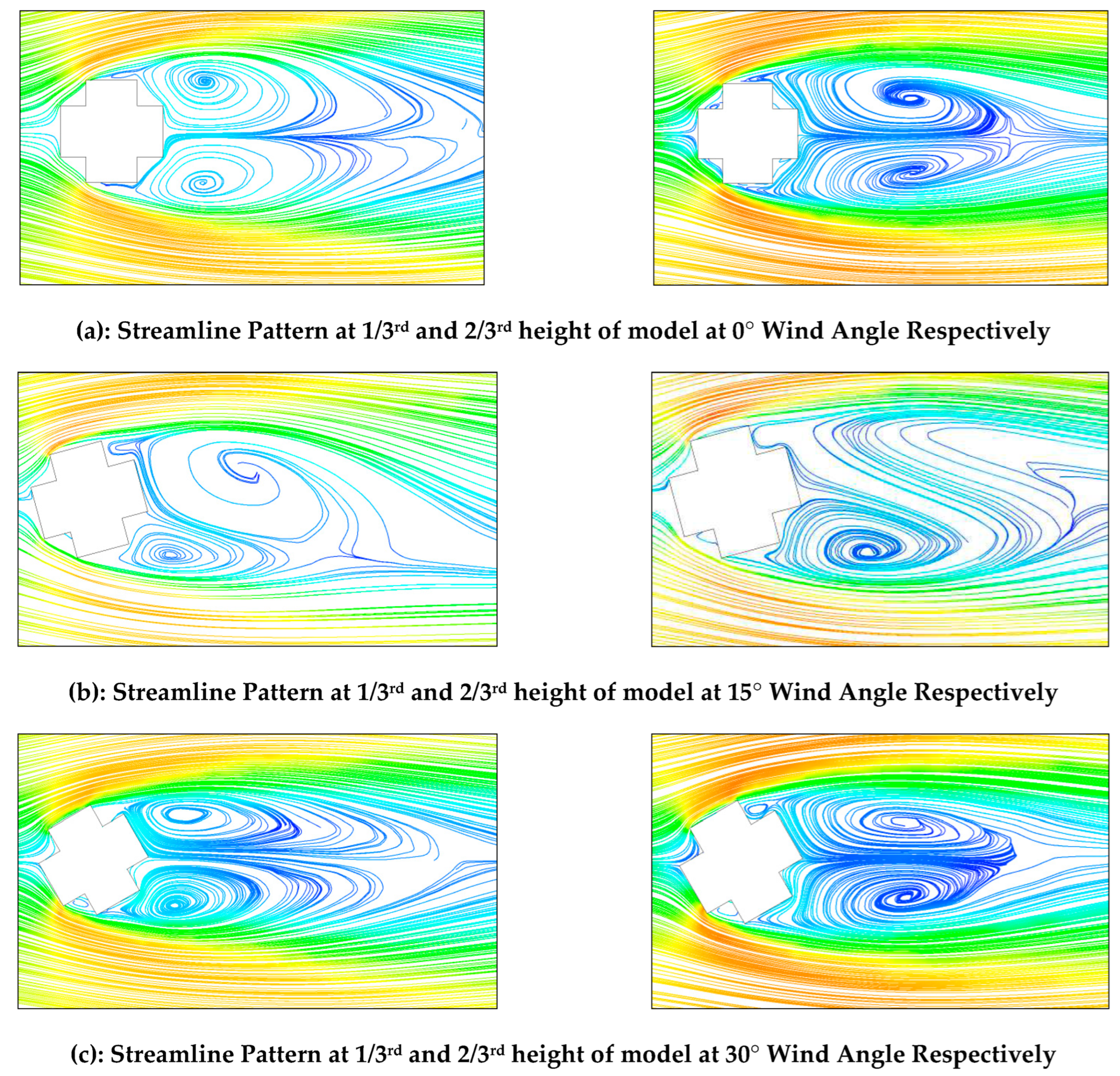
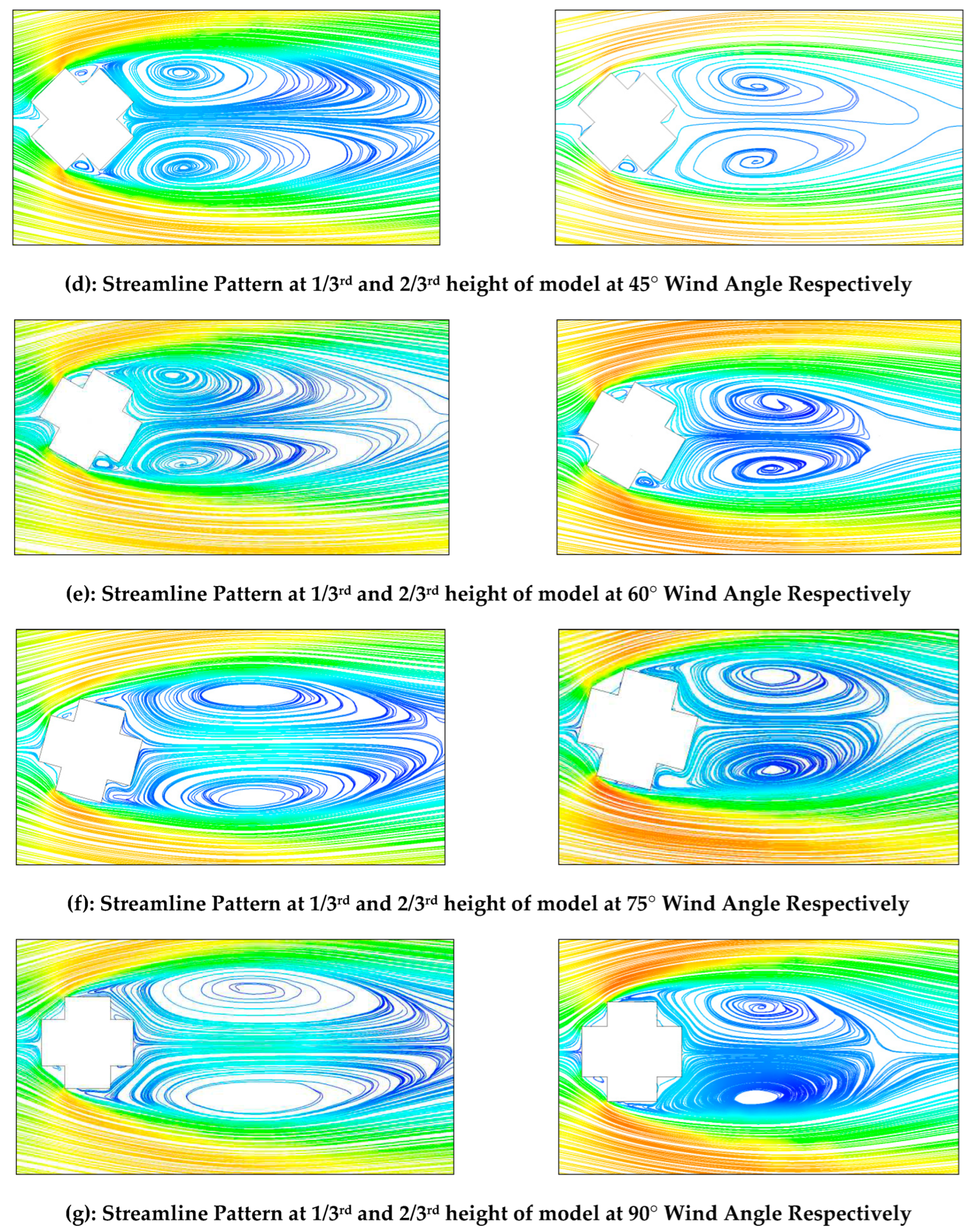
7.1.2. Streamlines on Central Vertical Plane
7.1.3. Streamlines on Re-entrant Corner Faces
7.2. Pressure/ Pressure Coefficient on Re-entrant Faces
7.2.1. Minimum, Maximum and Mean CPe
7.2.2. CPe Contours
7.2.3. Central Vertical Cpe on Faces
8. Conclusion
- The study observed substantial influence of wind incidence angles on the corner faces of plus plan-shaped buildings in terms of the variations in pressure on these for different wind incidence angles.
- The height of the building and the relative length dimensions of the wing faces are crucial factors affecting the pressure distribution on these faces. These factors are particularly important for designing cladding units necessitating consideration by design engineers.
- The simulation results demonstrate good agreement, especially for wind directions orthogonal to the building's faces, some differences are noted for other wind angles due to the complex, anisotropic, unsteady three-dimensional flow behavior of wind.
- The influence of streamlines in the bottom portion of the structure is relatively minimal while the upper portion exhibits the presence of robust vortices, particularly noticeable within wind angles varies from 0 to 30 degrees.
- The vortices remain relatively consistent in size and intensity for both the top and bottom portion in the case of 45-degree wind incidence angle.
- For tall buildings with re-entrant corners, the research revealed a notable stagnation zone at a 30-degree wind incidence angle, located at the mid-height of the model. Flow separation was observed originating from the leading edge under these conditions
- A circulation cavity was evident on the re-entrant corner of the building when wind is striking the building at 75-degree wind. It was observed that the size of vortices on the re-entrant corner remains consistent for wind angles of 0 and 90 degrees.
- The data observed may be utilized by architects for ventilation planning and structural designers for accurate wind load analysis, contributing to more effective and informed engineering calculations.
Author Contributions
Funding
Institutional Review Board Statement
Informed Consent Statement
Data Availability Statement
Acknowledgments
Conflicts of Interest
References
- Rukhaiyar, A.; Jayant, B.; Dahiya, K.; Meena, R.K.; Raj, R. CFD simulations for evaluating the wind effects on high-rise buildings having varying cross-sectional shape. J. Struct. Fire Eng. 2022, 14, 285–300. [Google Scholar] [CrossRef]
- Meena, R.K.; Raj, R.; Anbukumar, S. Effect of wind load on irregular shape tall buildings having different corner configuration. Sadhana - Academy Proceedings in Engineering Sciences 2022, 47, 1–17. [Google Scholar] [CrossRef]
- Meena, R.K.; Raj, R.; Anbukumar, S. Wind Excited Action around Tall Building Having Different Corner Configurations. Adv. Civ. Eng. 2022, 2022, 1–17. [Google Scholar] [CrossRef]
- IS: 875 (2015), Indian Standard design loads (other than earthquake) for buildings and structures-code of practice,part 3(wind loads). 2015.
- Hong Kong Building Department, GB 50009-2001, ASCE: 7-16(2017), AS/NZS:1170.2(2011), and IS: 875 (2015), Structural Design Actions - Part 2: Wind actions. Standards Australia/Standards New Zealand, Sydney, no. 7 98. 2011. [CrossRef]
- ASCE: 7-16(2017), Minimum Design Loads and Associated Criteria for Buildings and Other Structures. Structural Engineering Institute of the American Society of Civil Engineering, Reston, no. 7 98. 2017. [CrossRef]
- ASCE: 49-12(2012), Wind Tunnel Testing for Buildings and Other Structures.Structural Engineering Institute of the American Society of Civil Engineering, Reston. American Society of Civil Engineers 1801 Alexander Bell Drive Reston, Virginia 20191 www.asce.org/pubs, 2012.
- AS/NZS, “AS-NZS 1170-2 ( 2011 ) ( English ): Structural design actions - Part 2 : Wind actions [ By Authority of New Zealand Structure Verification Method B1 / VM1 ],” vol. 2, 2011.
- ETHIOPIAN STANDARD, ES ISO 4354 (2012) (English): Wind actions on structures, vol. 2012. 2012. [Online]. Available: http://scholar.google.com/scholar?start=10&q=asi+interface&hl=es&as_sdt=0,5#6.
- Gomes, M.G.; Rodrigues, A.M.; Mendes, P. Experimental and numerical study of wind pressures on irregular-plan shapes. J. Wind. Eng. Ind. Aerodyn. 2005, 93, 741–756. [Google Scholar] [CrossRef]
- Mendis, P.; Ngo, T.; Haritos, N.; Hira, A.; Samali, B.; Cheung, J. Wind Loading on Tall Buildings. EJSE: loading on structures, 2007; 7, 51–54. [Google Scholar] [CrossRef]
- Fu, J.; Li, Q.; Wu, J.; Xiao, Y.; Song, L. Field measurements of boundary layer wind characteristics and wind-induced responses of super-tall buildings. J. Wind. Eng. Ind. Aerodyn. 2008, 96, 1332–1358. [Google Scholar] [CrossRef]
- Tanaka, H.; Tamura, Y.; Ohtake, K.; Nakai, M.; Kim, Y.C. Experimental investigation of aerodynamic forces and wind pressures acting on tall buildings with various unconventional configurations. J. Wind. Eng. Ind. Aerodyn. 2012, 107–108, 179–191. [Google Scholar] [CrossRef]
- Amin, J.A.; Ahuja, A.K. Effects of Side Ratio on Wind-Induced Pressure Distribution on Rectangular Buildings. J. Struct. 2013, 2013, 1–12. [Google Scholar] [CrossRef]
- B. Bhattacharyya, Dalui S.K, and Ahuja A.K, “Wind Induced Pressure on ‘E’ Plan Shaped Tall Buildings,” Jordan Journal of Civil Engineering, vol. 8, no. 2, pp. 120–134, Apr. 2014, [Online]. Available: https://www.researchgate.net/publication/264548132.
- Yi, J.; Li, Q. Wind tunnel and full-scale study of wind effects on a super-tall building. J. Fluids Struct. 2015, 58, 236–253. [Google Scholar] [CrossRef]
- Mukherjee and A., K. Bairagi, “Wind Pressure and Velocity Pattern Around ‘N’ Plan Shape Tall Building- A Case Study,” in Asian J. Civil Eng, 2017, pp. 1241–1258.
- M. Mallick, A. M. Mallick, A. Mohanta, A. Kumar, and V. Raj, “Modelling of Wind Pressure Coefficients on C-Shaped Building Models,” Modelling and Simulation in Engineering. 2018; 2018, 6524945. [Google Scholar] [CrossRef]
- S. Chauhan and A. K. Ahuja, Response of Tall Building Subjected to Wind Loads Under Interference Condition. International Journal of Civil Engineering and Technology (IJCIET) 2020, 11, 156–163. [CrossRef]
- P. K. Goyal, S. P. K. Goyal, S. Kumari, S. Singh, R. K. Saroj, R. K. Meena, and R. Raj, “Numerical Study of Wind Loads on Y Plan-Shaped Tall Building Using CFD,” Civil Engineering Journal, vol. 8, no. 02, pp. 263–277, 2022. [CrossRef]
- P. Sanyal and S. K. Dalui, “Effects of side ratio for ‘Y’ plan shaped tall building under wind load,” Build Simul, vol. 14, no. 4, pp. 1221–1236, Aug. 2021. [CrossRef]
- R. Raj and A. Kumar Ahuja, “Wind Loads on Cross Shape Tall Buildings,” Journal of Academia and Industrial Research, vol. 2, no. 2, pp. 111–113, 2013.
- S. Chakraborty, S. K. S. Chakraborty, S. K. Dalui, and A. K. Ahuja, “Experimental Invstigation of Surface Pressure on ‘+’ Plan Shape Tall Building,” Jordan Journal of Civil Engineering, vol. 8, no. 3, pp. 251–261, 2014.
- ANSYS Inc, ANSYS CFX-Solver Theory Guide. 2009. [Online]. Available: http://www.ansys.com.
- J. Franke et al., “Impact of wind and storm on city life and built environment,” Recommendation on the use of CFD in Wind Engineering. In: COST action C14, vol. Version 1.0, pp. 1–12, 2004.
- Revuz J, Hargeaves D. M, and Owen J.S., “On the Domain Size for the Steady State CFD Modeling of a Tall Building,” Wind Structure, vol. 15, no. 4, pp. 313–329, 2012.
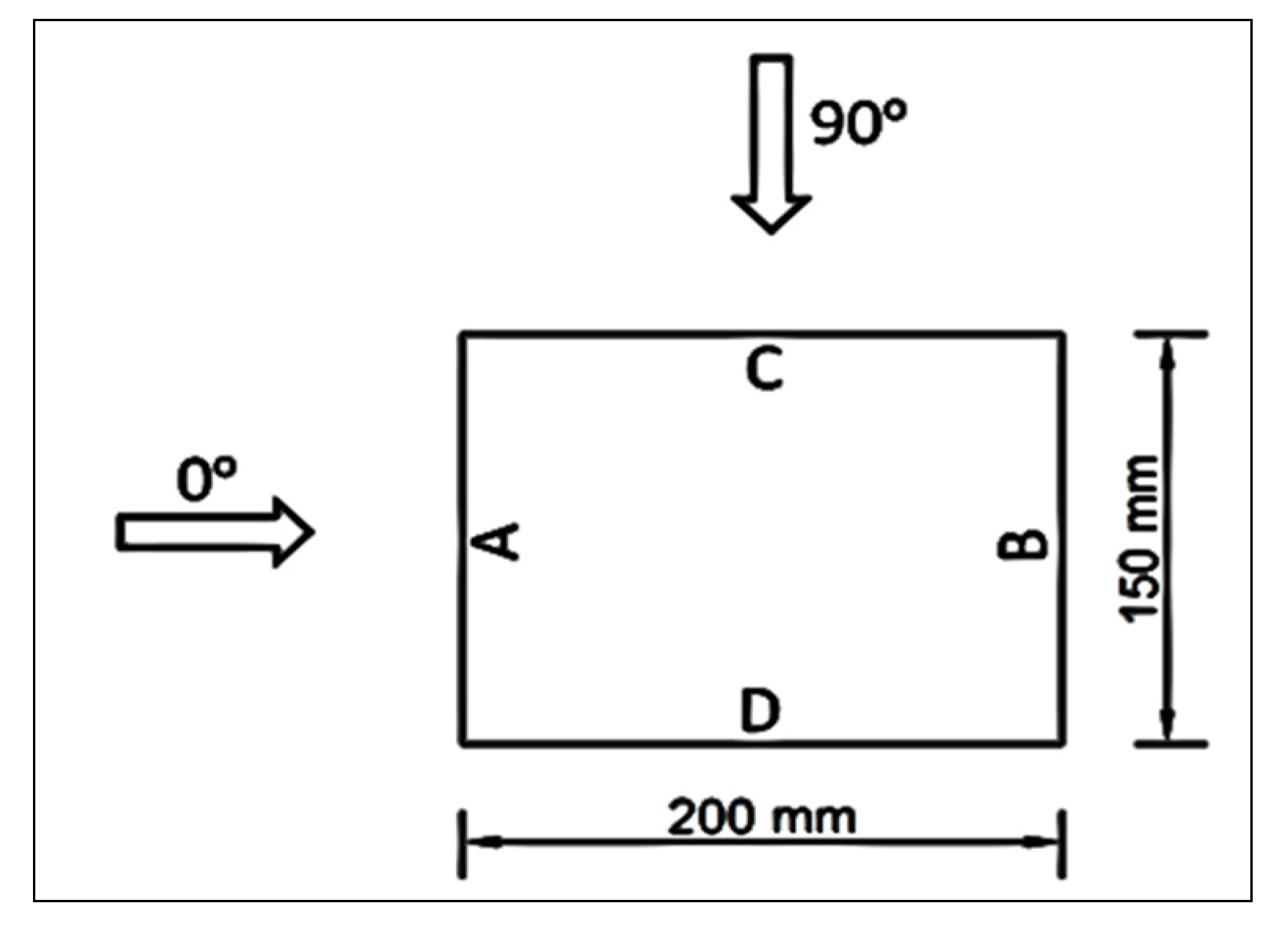
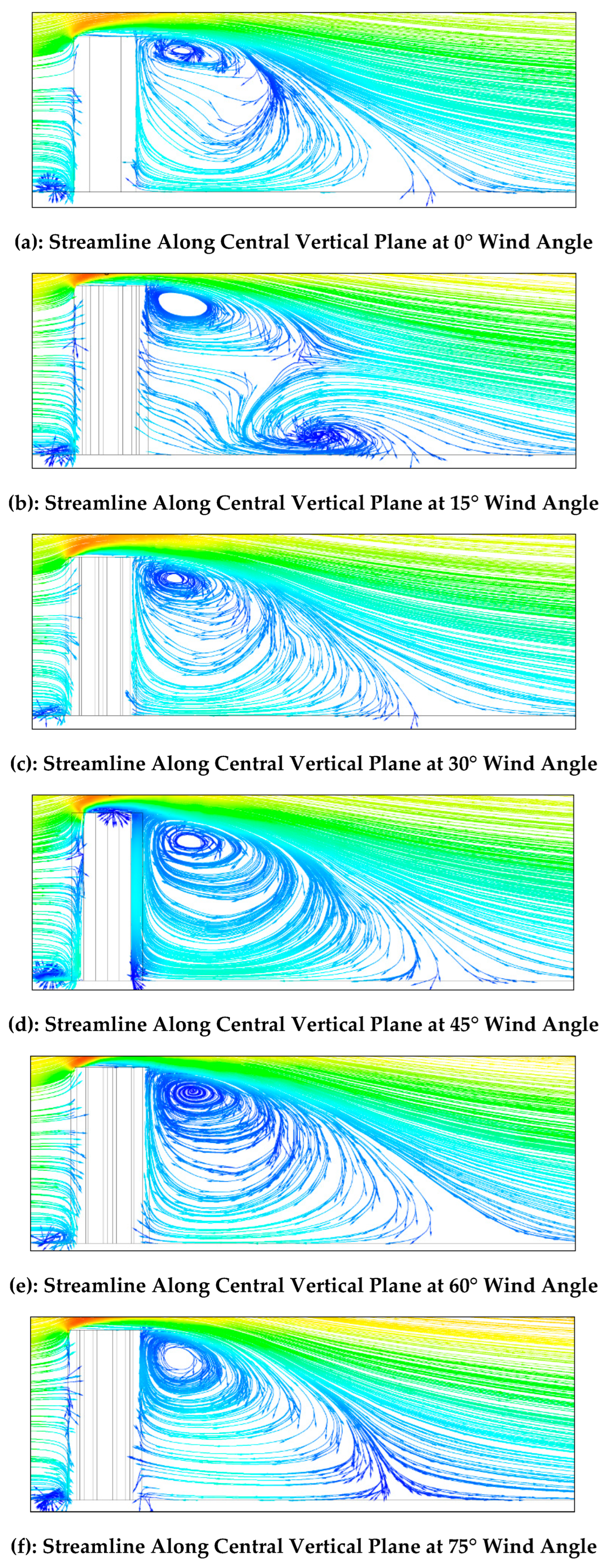
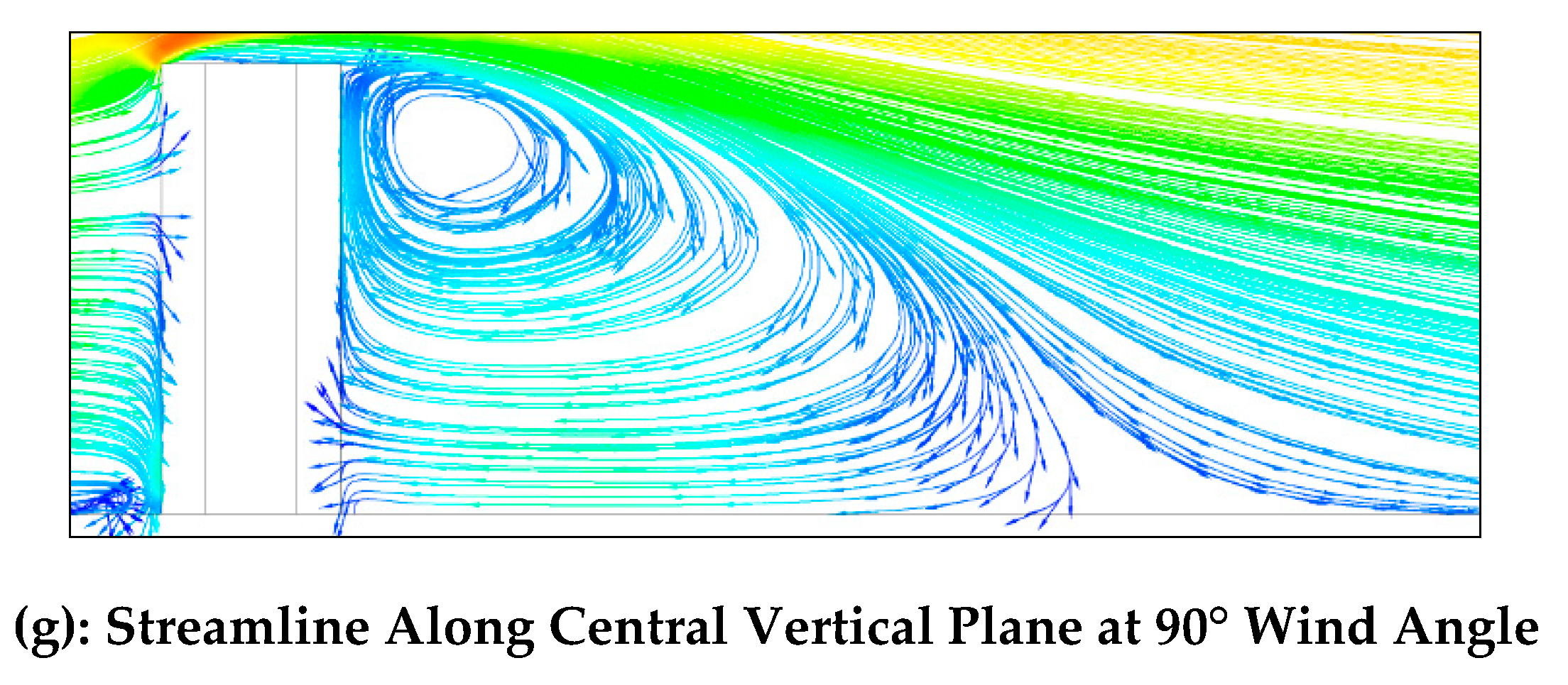
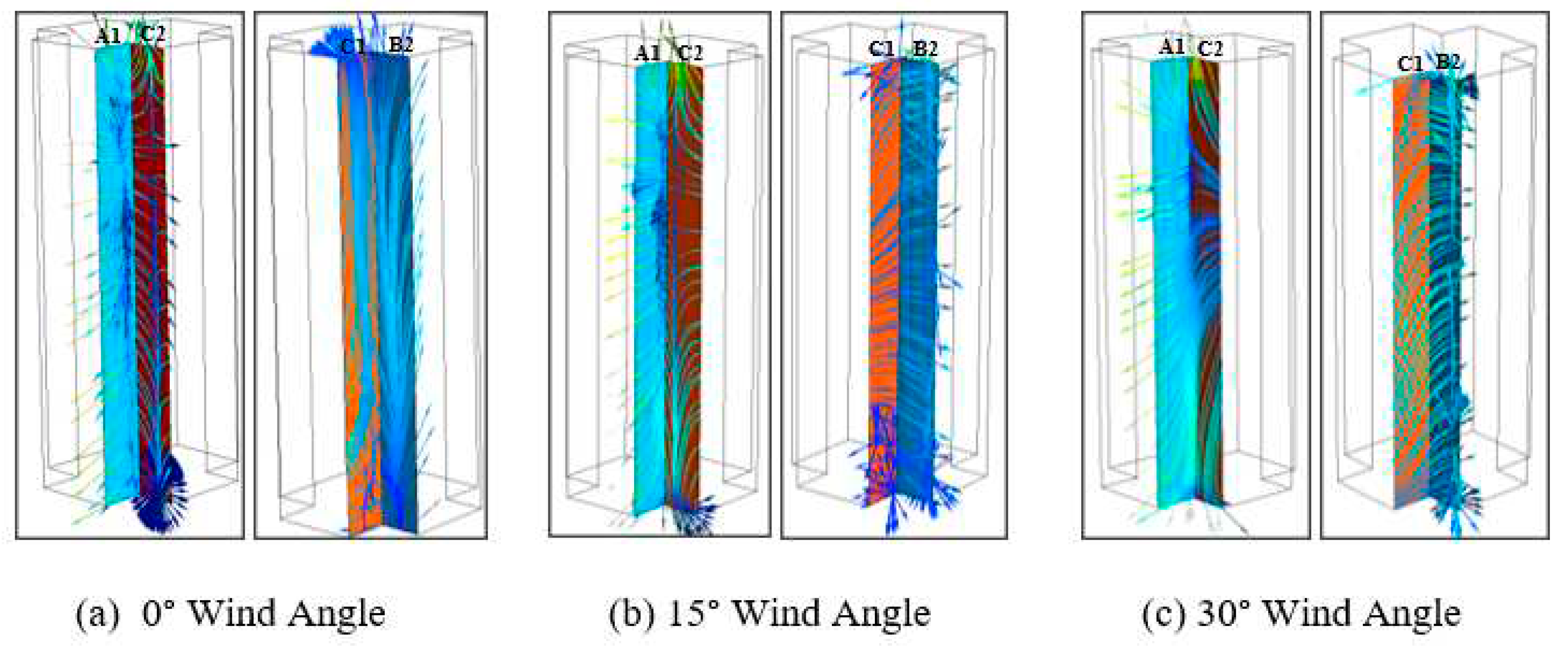
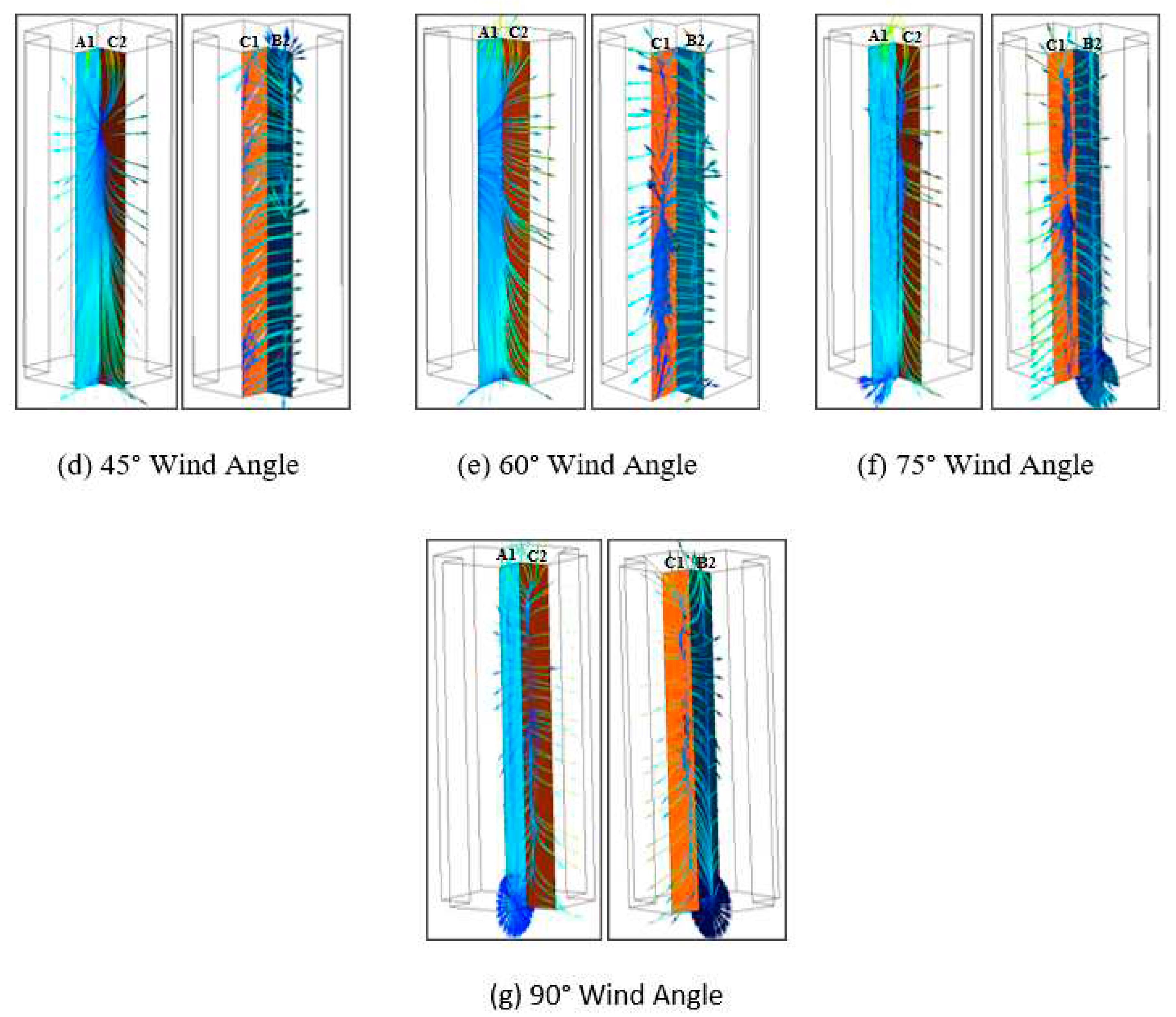

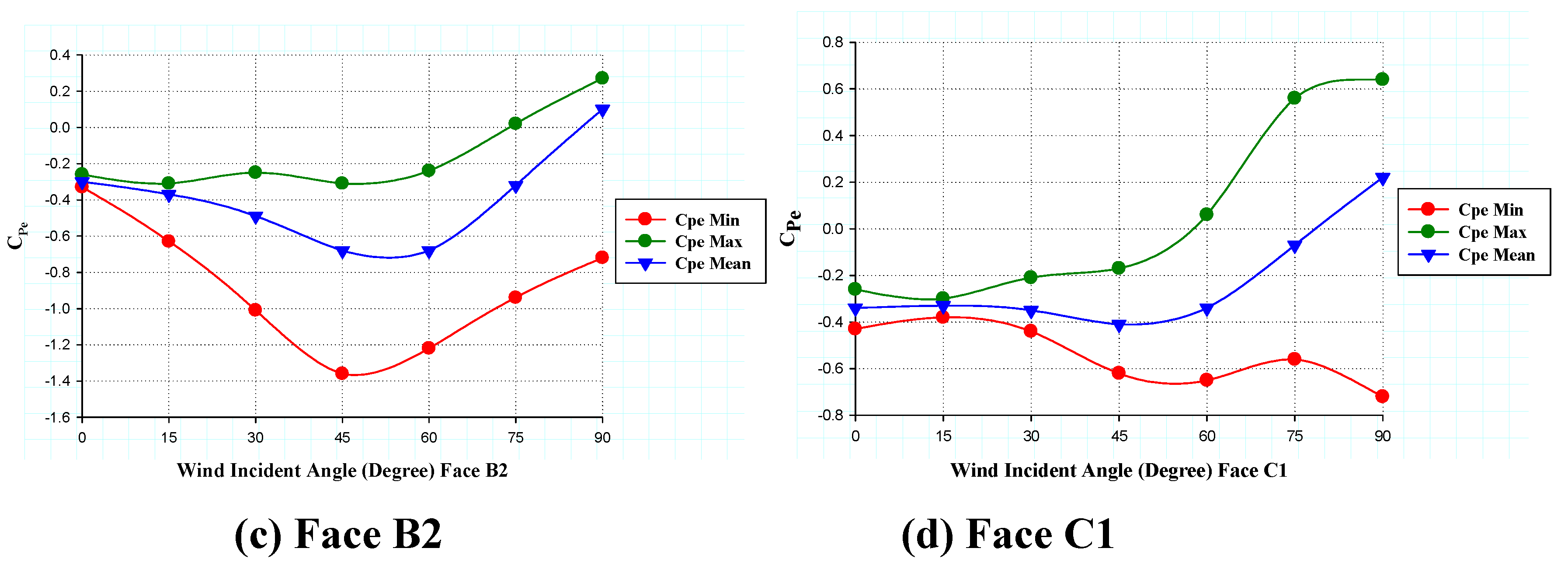
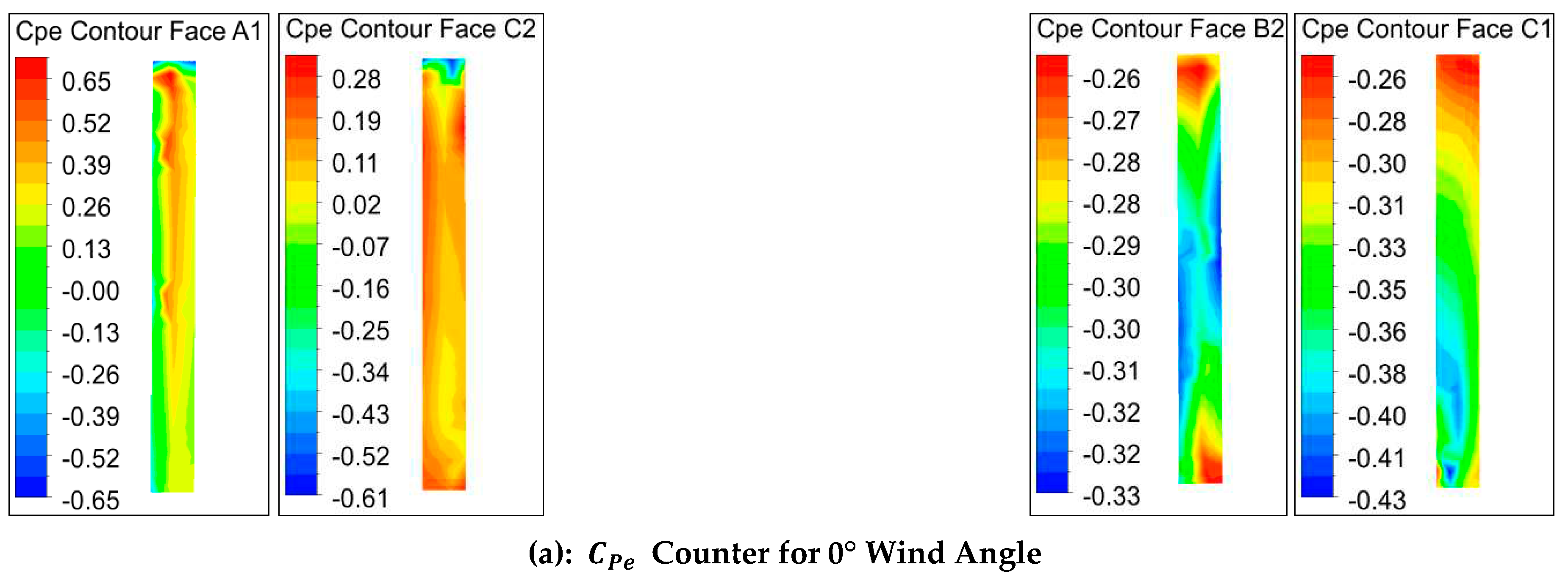
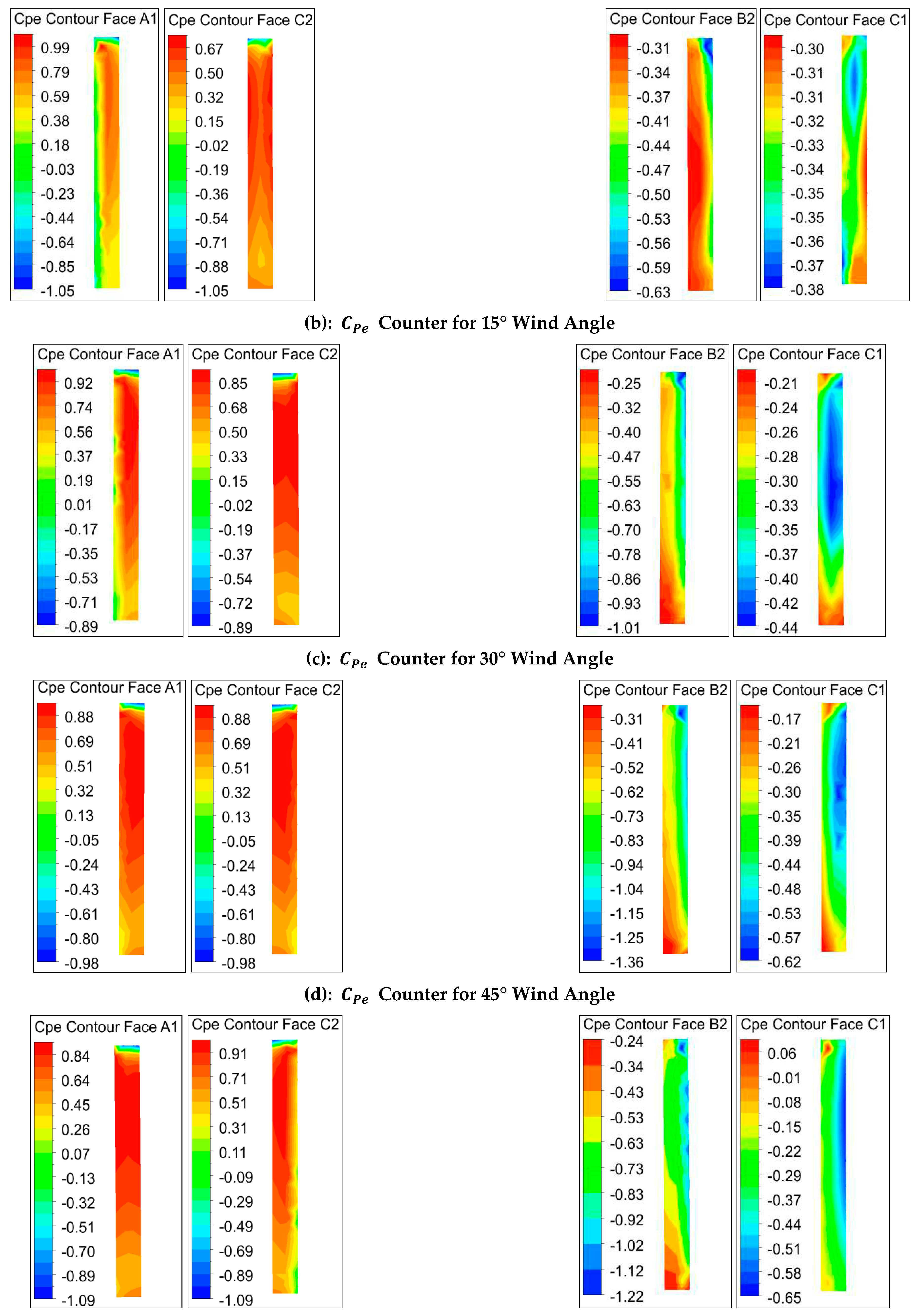
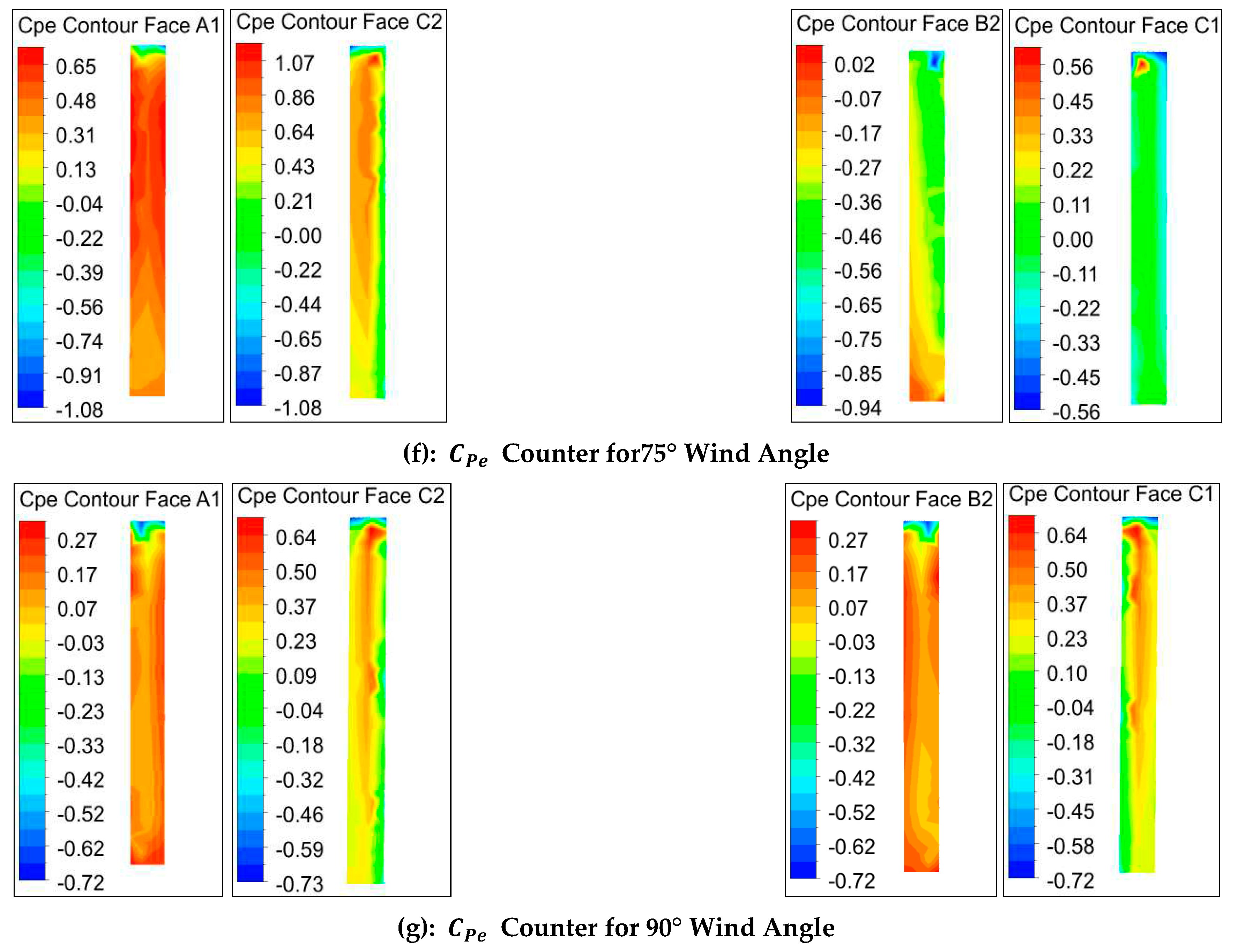
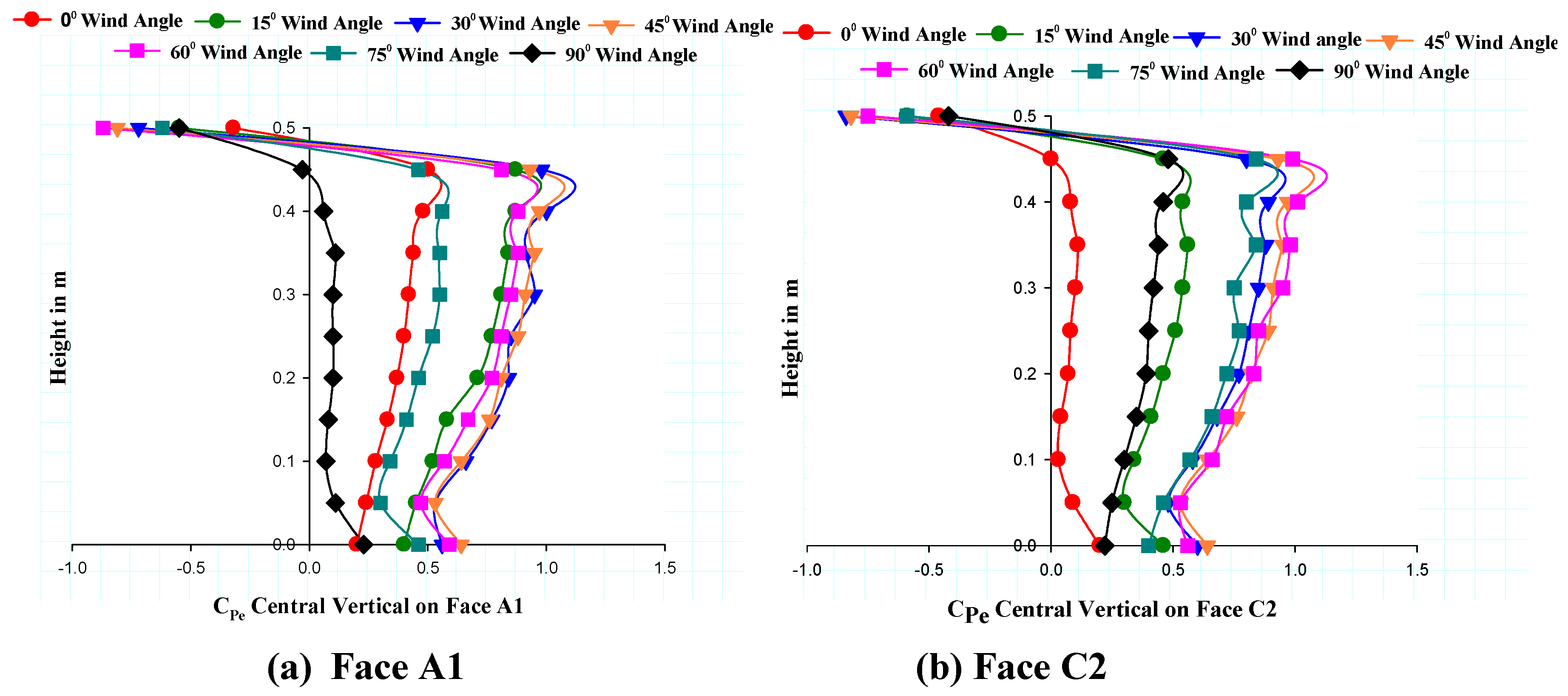
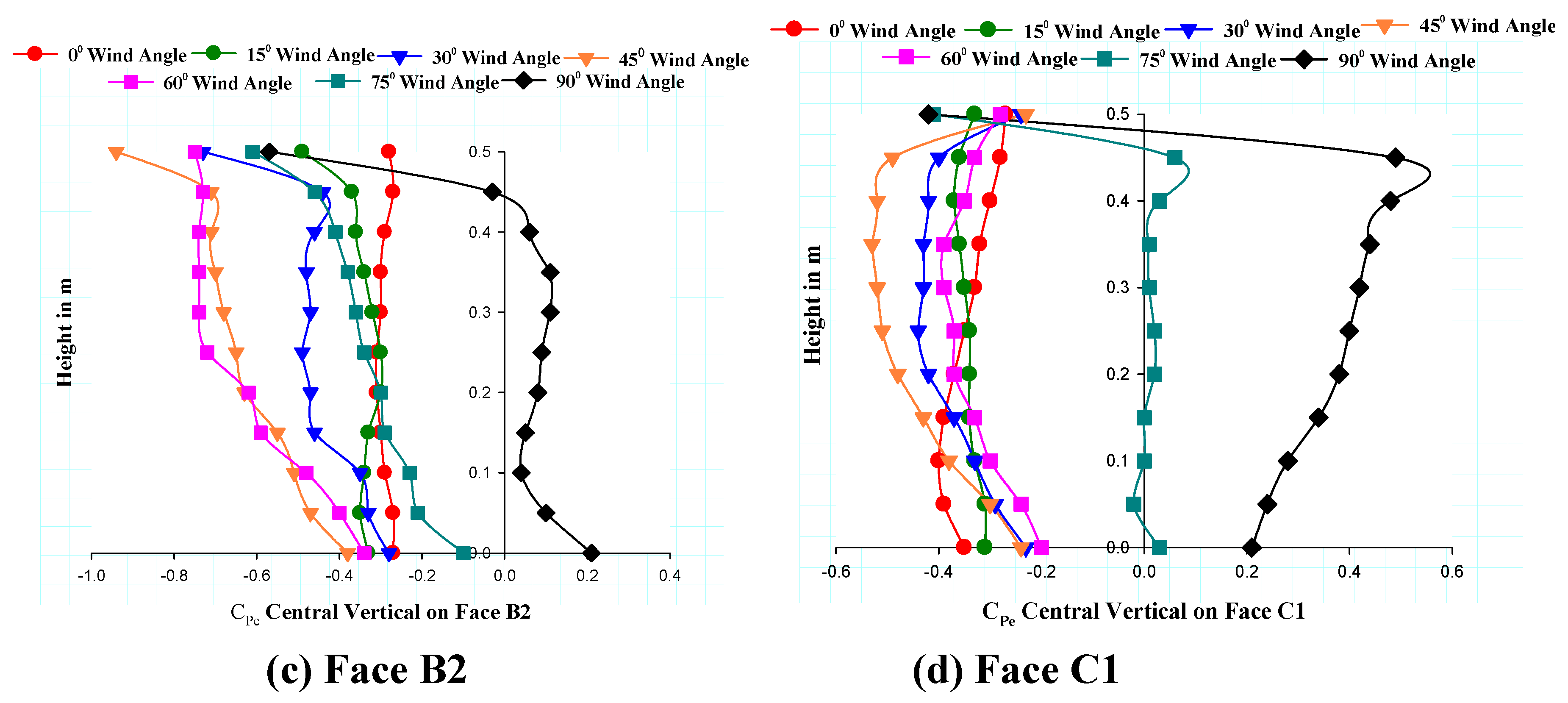
| As per | Wind Angle | CPe Face A | CPe Face B | CPe Face C | CPe Face D |
|---|---|---|---|---|---|
| ANSYS (CFX) | 0° | + 0.68 | - 0.27 | - 0.60 | - 0.60 |
| 90° | -0.60 | -0.60 | 0.70 | -0.28 | |
| IS: 875 (Part 3): 2015 | 0° | + 0.8 | - 0.25 | - 0.8 | - 0.8 |
| 90° | -0.8 | -0.8 | 0.8 | -0.25 | |
| ASCE/SEI 7-16 | 0° | + 0.8 | - 0.5 | - 0.7 | - 0.7 |
| 90° | -0.7 | -0.7 | 0.8 | -0.5 | |
| AS/NZS- 1170.2 (2002) | 0° | + 0.8 | - 0.5 | - 0.65 | - 0.65 |
| 90° | -0.65 | -0.65 | 0.8 | -0.5 | |
| EN: 1991-1-4 | 0° | 0.8 | -0.55 | -0.8 | -0.8 |
| 90° | -0.8 | -08 | 0.8 | -0.55 | |
Disclaimer/Publisher’s Note: The statements, opinions and data contained in all publications are solely those of the individual author(s) and contributor(s) and not of MDPI and/or the editor(s). MDPI and/or the editor(s) disclaim responsibility for any injury to people or property resulting from any ideas, methods, instructions or products referred to in the content. |
© 2023 by the authors. Licensee MDPI, Basel, Switzerland. This article is an open access article distributed under the terms and conditions of the Creative Commons Attribution (CC BY) license (http://creativecommons.org/licenses/by/4.0/).





